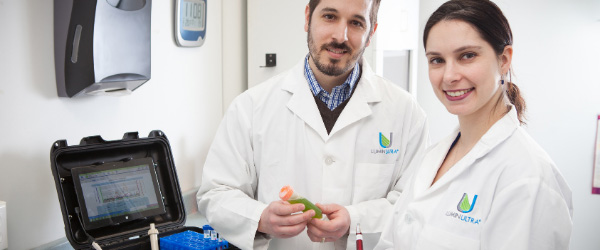Thanks to our two new DNA tools – Quantitative Polymerase Chain Reaction (qPCR) and Next Generation Sequencing (NGS) – LuminUltra can now rapidly screen for specific microbes or groups of microbes known to be significant in your process and identify nearly all of the types of microbes present. That means you’ll be able to make faster, more informed decisions, so you can ensure problems don’t go unidentified and your process decisions can be easily verified.
DNA tools like qPCR and NGS can keep water system processes running optimally by helping water quality managers to:
- Understand the cause and effect relationships certain microbes have on a process – positive or negative.
- See trends and understand future triggers for proactive versus reactive decision making.
- Apply more targeted treatment.
This post looks at a couple of recent studies that investigated microbial growth and biodiversity in water-miscible metalworking fluids using genetic sequencing and real-time PCR. While this information is specific to one industry, it’s clear from the results achieved that DNA tools allow for more complete and highly specific identification of microorganisms in all water samples.
We’ve developed a scenario involving a waste water treatment plant to help illustrate how our DNA tools could help our customers. In a waste water treatment plant experiencing persistent problems with filamentous bulking and sludge carryover in the secondary clarifier, LuminUltra’s NGS tool could be used to identify the issue and point toward a possible solution. NGS is changing the way wastewater treatment plants are monitored and understood while allowing old assumptions about treatment mechanisms to be questioned. It can be used in aerobic and anaerobic systems to monitor for problematic organisms like filamentous and foaming bacteria and for beneficial organisms like ammonia-oxidizing bacteria and methanogens.
Traditionally, operators at such a facility would use a microscope to try and identify filamentous organisms, but switching to NGS would reduce organism misidentification. NGS ensures standardized, quantitative results that are easy to interpret with no additional training. The tool also gives the added benefit of identifying all organisms, not just filamentous. This allows the plant to understand other processes including: biological nutrient removal, viscous bulking, foaming and aeration performance.
Filamentous organisms have both positive and negative effects on wastewater treatment systems. At high abundances, filamentous organisms like Kouleothrix cause filamentous bulking, which is detrimental to wastewater treatment systems. Through a LuminUltra NGS report, a waste water treatment plant facing this sort of scenario would be able to identify the significant filamentous bulking organisms leading up to a bulking event. NGS results can also identify the cause of a bulking event. For instance, if a high abundance of Caldilinea and Kouleothrix is observed, the cause would be identified as low F:M.
LuminUltra’s 2nd Generation ATP test kits have been delivering rapid and accurate quantification of the total microbial population in a sample for more than 15 years. Now, with our new qPCR and NGS tools, we can offer detailed insight into which microbes make up that population.









